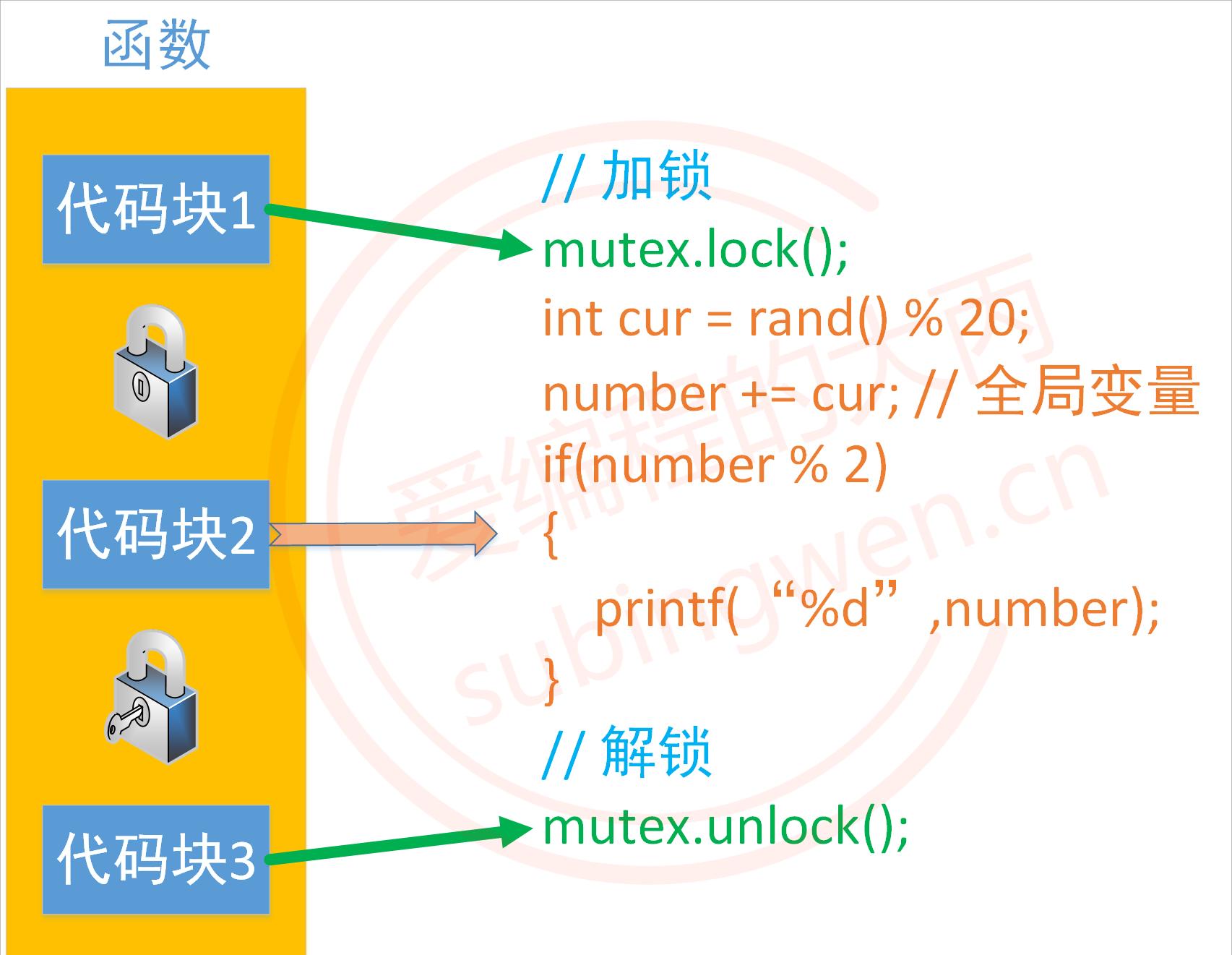- 时间:2023-05-03 16:33:17
- 浏览:
在多线程编程中,线程同步是非常重要的一环。它可以保证多个线程之间的安全访问共享资源,避免出现数据不一致或者死锁等问题。那么,在Linux系统下,我们可以采用哪些方法来实现线程同步呢?本文将会为大家介绍三种值得推荐的方法。
1.互斥锁(mutex)
互斥锁是一种最基本的锁机制线程同步的方法有哪些?Linux下实现线程同步的三[荐],它能够保证在任意时刻只有一个线程可以访问共享资源。当一个线程获取到了互斥锁后,其他线程就必须等待该线程释放锁之后才能访问共享资源。在Linux系统下,我们可以通过调用pthread_mutex_init()函数来初始化互斥锁,然后使用pthread_mutex_lock()和pthread_mutex_unlock()函数来进行加锁和解锁操作。
实现线程的集中方法_线程同步的方法有哪些?Linux下实现线程同步的三[荐]_使用线程实现串口通信
下面是一个使用互斥锁实现线程同步的示例代码:
c
#include
#include
#include
pthread_mutex_tmutex;
void*thread_func(void*arg)
{
inti;
for(i=0;i<5;i++){
pthread_mutex_lock(&mutex);
printf("Thread%disrunning\n",*(int*)arg);
pthread_mutex_unlock(&mutex);
}
pthread_exit(NULL);
}
intmain()
{
inti;
pthread_tthreads[3];
intthread_args[3]={1,2,3};
/*初始化互斥锁*/
if(pthread_mutex_init(&mutex,NULL)!=0){
perror("pthread_mutex_initerror");
exit(1);
}
/*创建三个线程*/
for(i=0;i<3;i++){
if(pthread_create(&threads[i],NULL,thread_func,&thread_args[i])!=0){
perror("pthread_createerror");
exit(1);
}
}
/*等待所有线程结束*/
for(i=0;i<3;i++){
if(pthread_join(threads[i],NULL)!=0){
perror("pthread_joinerror");
exit(1);
}
}
/*销毁互斥锁*/
pthread_mutex_destroy(&mutex);
return0;
}
使用线程实现串口通信_线程同步的方法有哪些?Linux下实现线程同步的三[荐]_实现线程的集中方法
2.条件变量(conditionvariable)
条件变量是一种高级的线程同步机制,它可以让线程在某个条件满足时才进行操作。当一个线程需要等待某个条件变量时,它会调用pthread_cond_wait()函数来进入等待状态。当另外一个线程满足了这个条件后,它会调用pthread_cond_signal()或者pthread_cond_broadcast()函数来通知等待的线程。
使用线程实现串口通信_实现线程的集中方法_线程同步的方法有哪些?Linux下实现线程同步的三[荐]
下面是一个使用条件变量实现生产者-消费者模型的示例代码:
c
#include
#include
#include
#defineBUFFER_SIZE10
intbuffer[BUFFER_SIZE];
intcount=0;
pthread_mutex_tmutex;
pthread_cond_tcond;
void*producer(void*arg)
{
inti;
for(i=0;i<20;i++){
pthread_mutex_lock(&mutex);
/*缓冲区已满,等待消费者消费*/
while(count==BUFFER_SIZE){
pthread_cond_wait(&cond,&mutex);
}
buffer[count++]=i;
printf("Producer:produceitem%d\n",i);
/*通知消费者可以消费了*/
pthread_cond_signal(&cond);
pthread_mutex_unlock(&mutex);
}
pthread_exit(NULL);
}
void*consumer(void*arg)
{
inti;
for(i=0;i<20;i++){
pthread_mutex_lock(&mutex);
/*缓冲区已空,等待生产者生产*/
while(count==0){
pthread_cond_wait(&cond,&mutex);
}
printf("Consumer:consumeitem%d\n",buffer[--count]);
/*通知生产者可以生产了*/
pthread_cond_signal(&cond);
pthread_mutex_unlock(&mutex);
}
pthread_exit(NULL);
}
intmain()
{
pthread_tproducer_thread,consumer_thread;
/*初始化互斥锁和条件变量*/
if(pthread_mutex_init(&mutex,NULL)!=0){
perror("pthread_mutex_initerror");
exit(1);
}
if(pthread_cond_init(&cond,NULL)!=0){
perror("pthread_cond_initerror");
exit(1);
}
/*创建生产者和消费者线程*/
if(pthread_create(&producer_thread,NULL,producer,NULL)!=0){
perror("pthread_createerror");
exit(1);
}
if(pthread_create(&consumer_thread,NULL,consumer,NULL)!=0){
perror("pthread_createerror");
exit(1);
}
/*等待生产者和消费者线程结束*/
if(pthread_join(producer_thread,NULL)!=0){
perror("pthread_joinerror");
exit(1);
}
if(pthread_join(consumer_thread,NULL)!=0){
perror("pthread_joinerror");
exit(1);
}
/*销毁互斥锁和条件变量*/
pthread_mutex_destroy(&mutex);
pthread_cond_destroy(&cond);
return0;
}
实现线程的集中方法_使用线程实现串口通信_线程同步的方法有哪些?Linux下实现线程同步的三[荐]
3.读写锁(read-writelock)
读写锁是一种特殊的锁机制,它允许多个线程同时对共享资源进行读操作,但是在进行写操作时必须互斥。在Linux系统下,我们可以通过调用pthread_rwlock_init()函数来初始化读写锁,然后使用pthread_rwlock_rdlock()、pthread_rwlock_wrlock()和pthread_rwlock_unlock()函数来进行加锁和解锁操作。
线程同步的方法有哪些?Linux下实现线程同步的三[荐]_使用线程实现串口通信_实现线程的集中方法
下面是一个使用读写锁实现多线程读写文件的示例代码:
c
#include
#include
#include
#include
#defineBUFFER_SIZE1024
charbuffer[BUFFER_SIZE];
intbuffer_len=0;
pthread_rwlock_trwlock;
void*read_thread(void*arg)
{
FILE*fp;
charfilename[]="test.txt";
fp=fopen(filename,"r");
if(fp==NULL){
perror("fopenerror");
exit(1);
}
while(1){
pthread_rwlock_rdlock(&rwlock);
if(fgets(buffer,BUFFER_SIZE,fp)!=NULL){
buffer_len=strlen(buffer);
printf("Reader:read%dbytesfromfile\n",buffer_len);
}else{
printf("Reader:reachendoffile\n");
break;
}
pthread_rwlock_unlock(&rwlock);
}
fclose(fp);
pthread_exit(NULL);
}
void*write_thread(void*arg)
{
FILE*fp;
charfilename[]="output.txt";
fp=fopen(filename,"w");
if(fp==NULL){
perror("fopenerror");
exit(1);
}
while(1){
pthread_rwlock_wrlock(&rwlock);
if(buffer_len>0){
fwrite(buffer,buffer_len,1,fp);
printf("Writer:write%dbytestofile\n",buffer_len);
buffer_len=0;
}else{
printf("Writer:nodatatowrite\n");
break;
}
pthread_rwlock_unlock(&rwlock);
}
fclose(fp);
pthread_exit(NULL);
}
intmain()
{
pthread_tread_threads[3],write_thread;
inti;
/*初始化读写锁*/
if(pthread_rwlock_init(&rwlock,NULL)!=0){
perror("pthread_rwlock_initerror");
exit(1);
}
/*创建三个读线程和一个写线程*/
for(i=0;i<3;i++){
if(pthread_create(&read_threads[i],NULL,read_thread,NULL)!=0){
perror("pthread_createerror");
exit(1);
}
}
if(pthread_create(&write_thread,NULL,write_thread,NULL)!=0){
perror("pthread_createerror");
exit(1);
}
/*等待所有读线程和写线程结束*/
for(i=0;i<3;i++){
if(pthread_join(read_threads[i],NULL)!=0){
perror("pthread_joinerror");
exit(1);
}
}
if(pthread_join(write_thread,NULL)!=0){
perror("pthread_joinerror");
exit(1);
}
/*销毁读写锁*/
pthread_rwlock_destroy(&rwlock);
return0;
}
以上就是本文介绍的三种实现线程同步的方法。无论是互斥锁、条件变量还是读写锁,都有其各自的优劣势线程同步的方法有哪些?Linux下实现线程同步的三[荐],需要根据实际情况选择使用。希望本文能够对大家有所帮助。





